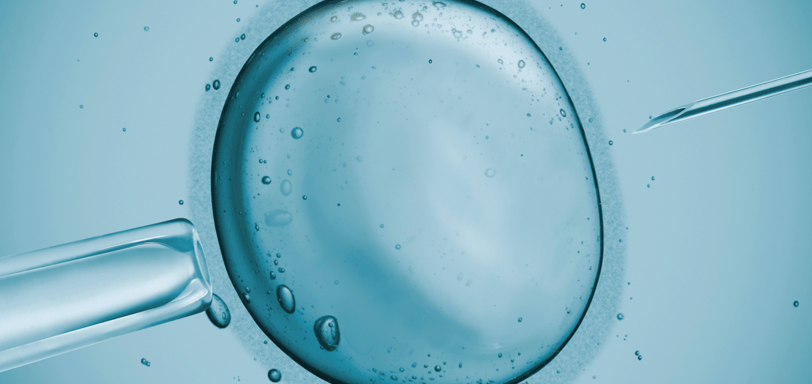Understanding IVF: How It Works and What to Expect
In vitro fertilization (IVF) is one of the most effective assisted reproductive technologies (ART) available today. It has helped millions of couples and individuals overcome infertility to achieve pregnancy. However, IVF can be a complex and emotionally demanding process, involving hormonal treatments, egg retrieval, fertilization in a lab, and embryo transfer. This article explains: • How IVF works – step by step. • Success rates and factors that influence outcomes. • Risks, costs, and emotional aspects of the treatment.
FERTILITY AND INFERTILITY
3/18/20253 min read


1. Who Can Benefit from IVF?
· IVF is recommended for:
· Women with blocked or damaged fallopian tubes.
· Women with low ovarian reserve or poor egg quality.
· Couples experiencing unexplained infertility.
· Men with low sperm count or poor sperm motility.
· Individuals with genetic conditions requiring embryo screening.
· LGBTQ+ couples and single parents using donor eggs, sperm, or surrogacy.
2. IVF Step by Step: How the Process Works
Step 1: Ovarian Stimulation
The woman takes hormonal injections for 10–14 days to stimulate multiple eggs to develop.
Follicle growth is monitored via ultrasound and blood tests.
When the follicles reach maturity (17–20mm in size), an hCG trigger shot is administered.
Step 2: Egg Retrieval (Oocyte Aspiration)
36 hours after the trigger shot, eggs are retrieved using a thin needle inserted through the vagina, guided by ultrasound.
The procedure takes 15–20 minutes and is performed under sedation or anesthesia.
Step 3: Sperm Collection and Fertilization
A sperm sample is collected from the partner or donor.
Fertilization is done using one of two methods:
Conventional IVF – Sperm and eggs are placed together in a petri dish.
ICSI (Intracytoplasmic Sperm Injection) – A single sperm is injected directly into each egg, often used for male infertility.
Step 4: Embryo Development
Fertilized eggs develop into embryos over 5–6 days.
Embryologists monitor cell division and quality.
On Day 5 or 6, the best embryos (blastocysts) are selected for transfer.
Step 5: Embryo Transfer
The healthiest embryo(s) are transferred into the uterus using a thin catheter.
The procedure is quick and painless, similar to a Pap smear.
Any extra embryos can be frozen for future use.
Step 6: The Two-Week Wait and Pregnancy Test
12–14 days after embryo transfer, a blood test checks for pregnancy.
If positive, pregnancy is monitored via ultrasound at 6–7 weeks to confirm fetal heartbeat.
3. IVF Success Rates: What to Expect?
Success Rates by Age
Age Group IVF Success Rate (Live Births per Cycle)
Under 35 45–70%
35–37 40%
38–39 30–35%
40–42 8–25%
Over 42 <10%
IVF is most successful in younger women because egg quality declines with age.
Factors That Affect IVF Success
· Age and ovarian reserve – AMH and follicle count play a key role.
· Sperm quality – Poor sperm motility may require ICSI.
· Uterine health – Fibroids, polyps, or thin endometrial lining can impact implantation.
· Embryo quality – Chromosomal abnormalities lower success rates.
· Lifestyle factors – Smoking, obesity, and stress negatively affect outcomes.
4. Risks and Side Effects of IVF
While IVF is safe, potential risks include:
A. Ovarian Hyperstimulation Syndrome (OHSS)
Caused by excessive hormone stimulation.
Symptoms: bloating, nausea, rapid weight gain, fluid retention.
Severe cases require hospitalization.
B. Multiple Pregnancies
Transferring multiple embryos increases the risk of twins or triplets.
Multiple pregnancies lead to higher risks of preterm birth and complications.
C. Emotional and Financial Stress
The emotional toll of failed cycles can be significant.
IVF costs range from $10,000 to $20,000 per cycle, depending on location.
5. Cost and Accessibility of IVF
Country. Average Cost per Cycle (USD)
United States. $12,000 – $25,000
UK $7,000 – $10,000
Canada $10,000 – $15,000
Brazil $4,000 – $6,000
India $2,000 – $4,000
· Some insurance plans cover IVF, but coverage varies by country and provider.
6. Conclusion: Is IVF Right for You?
IVF offers hope to many couples facing infertility, but it is not a guaranteed solution.
· Younger patients have higher success rates.
· Embryo freezing allows for multiple attempts.
· Genetic testing (PGT-A) can help identify healthy embryos.
· Emotional support is crucial – consider counseling during treatment.
If you are considering IVF, consult a fertility specialist to discuss your options and personalize your treatment plan.
Would you like to explore the next topic: "Egg Freezing: Who Should Consider It and How It Works"? 🚀😊
References
Cardim, H.J.P. Vencendo a Dificuldade de Engravidar. Editora Pensamento-Cultrix Ltda, 2009.
Practice Committee of the ASRM. "Assisted Reproductive Technology Success Rates." Fertility and Sterility, 2023.
ESHRE (European Society of Human Reproduction and Embryology). "IVF Outcomes and Risk Factors." Human Reproduction Update, 2022.
All information is evidence-based and properly referenced
